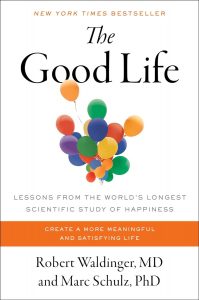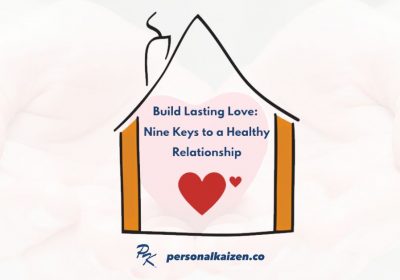
Do you ever wish you could learn the essential ingredients to a good, happy life? Or that you could learn what worked, and didn’t work, from others? Robert Waldinger and Marc Schulz released The Good Life: Lessons from the World’s Longest Scientific Study of Happiness in 2023 to share results from an 84-year-old Harvard study on happiness. Read on for a summary of what they hope will help us all create a more meaningful and satisfying life.
The Harvard Study Began Over 85 Years Ago
Since 1938, the Harvard Study of Adult Development has been investigating what makes people flourish. The study started by interviewing 724 participants, including a mix of boys from disadvantaged and troubled families in Boston and Harvard undergraduates. Harvard researchers periodically interview participants, ask them to fill out questionnaires, and collect information about their physical health. Over time, the study incorporated the spouses of the original men and, more recently, more than 1,300 descendants of the initial group.
The authors of The Good Life are the study’s current director (Bob Waldinger) and associate director (Marc Schulz). The Harvard happiness study is the longest in-depth, longitudinal study on human life, leading to a simple and profound conclusion.
Positive Relationships are Essential to Human Well-Being

The central takeaway of The Good Life is surprising yet simple: strong, supportive relationships are the key to living well. The authors draw on over 85 years of happiness research data from the Harvard Study as they followed the men’s lives. This included through marriage, careers, parenthood, and old age, examining how their relationships impacted their happiness and overall health.
Waldinger and Schulz share compelling stories from the study participants, illustrating how close bonds with friends, family, and romantic partners fostered greater well-being. They contrast rich, successful men with simple, poor men and find that having money doesn’t equal happiness.
Bob and Marc also find that while the happiest and healthiest participants were those with the best relationships, the lowest moments in the participants’ lives also involved relationships. Divorces, the death of a loved one, drug and alcohol abuse – these moments were noted as being the most trying times in a life.
The book goes beyond simply highlighting the importance of relationships, however. It also offers practical takeaways on cultivating and strengthening these connections throughout life.
The WISER model
The authors present a simple model that can be used to strengthen relationships by allowing you to improve communications by slowing down and taking the time to respond rather than reacting impulsively.
Here’s a breakdown of the WISER approach:
- Watch: Notice your emotions as they arise. Pay attention to physical sensations and identify the feeling itself (anger, sadness, etc.).
- Interpret: Don’t take your emotions at face value. Analyze the situation and consider alternative interpretations of what’s triggering your feelings.
- Select: Recognize that you have a choice in how you respond. Don’t be ruled by your emotions; choose a response that aligns with your values and goals.
- Engage: Take action based on your chosen response. This might involve communication, setting boundaries, or simply taking time to calm down.
- Reflect: Afterward, take some time to consider how the situation unfolded. Evaluate the effectiveness of your chosen response and identify areas for improvement for future situations.

Partnerships
Your spouse or partner is likely the primary relationship in your life, a relationship you chose to begin, and likely the relationship with the biggest impact on your happiness. Choose wisely, and take the time to improve this relationship (using the WISER model, or in other ways).
Rule 5 of the Personal Kaizen 10 Rules of Life is to Experience Love and be Loved. Never forget that “Love is a verb; it is an action.” If you are ever feeling less in love, the solution is to do loving things. We suggest you identify things you can do for your partner to cultivate the relationship. If you aren’t sure what to do, ask them!
Family Relationships are Lasting

Unlike your spouse or partner, you don’t choose your family. For better or worse, our family members are often the people most involved in our lives when we are developing, and who know us for the longest stretch of time. The Good Life shares many examples of weak and strong family bonds and their impacts on happiness.
Here are several principles the book recommends for strengthening bonds for both immediate and extended families:
- Start with yourself: what automatic reactions do you have for your family members? Are you passing judgment?
- Routines are important: family relations are often defined by their regular contact. Holidays, parties, birthdays, anniversaries, weddings, and even simple phone calls are ways to stay in contact. As life changes, finding new rituals can help keep family connections alive.
- Remember that every family member has their store of buried treasure: family stories are important for bonding and maintaining connections.
Relationships at Work
The polling firm Gallup has been conducting workplace engagement surveys for over 30 years. One question asks: “Do you have a best friend at work?
Managers and employees may find this to be an odd question, but research has found that people who have a best friend at work are more engaged than those who don’t (especially for women who “strongly agree” with the question).
The COVID pandemic and the growth of remote work tend to isolate employees. Employers would be wise to create common spaces at work and provide time for employees to interact and form friendships at work.
Achieving the Good Life

The 85-year Harvard survey has discovered the importance of relationships in a happy life. In fact, a good life is not an achievement or destination. It is the journey itself, and the people who are walking it with you.
“The Good Life is not a destination, it is the path of life itself and the people who are taking it with you.”
Think about one person who is important to you on this path and reach out to them right now. It could be a spouse or partner, a child, a parent, a sibling, or even a friend from the past. They may be sitting next to you as you read this.
Think about what they have done for you and what they mean to you. Who would you be without them? Take a moment right now to talk to them and tell them.
Summary
We hope you enjoyed learning about the Harvard study on happiness. You can learn more by reading The Good Life: Lessons from the World’s Longest Scientific Study of Happiness and get updated information on the study by visiting lifespanresearch.org. Please leave your comments on this book summary below and check back to learn more about leading a good, happy life.




